Adidas Solar Glide 5 Review Analysis (2022): Should You Get It?
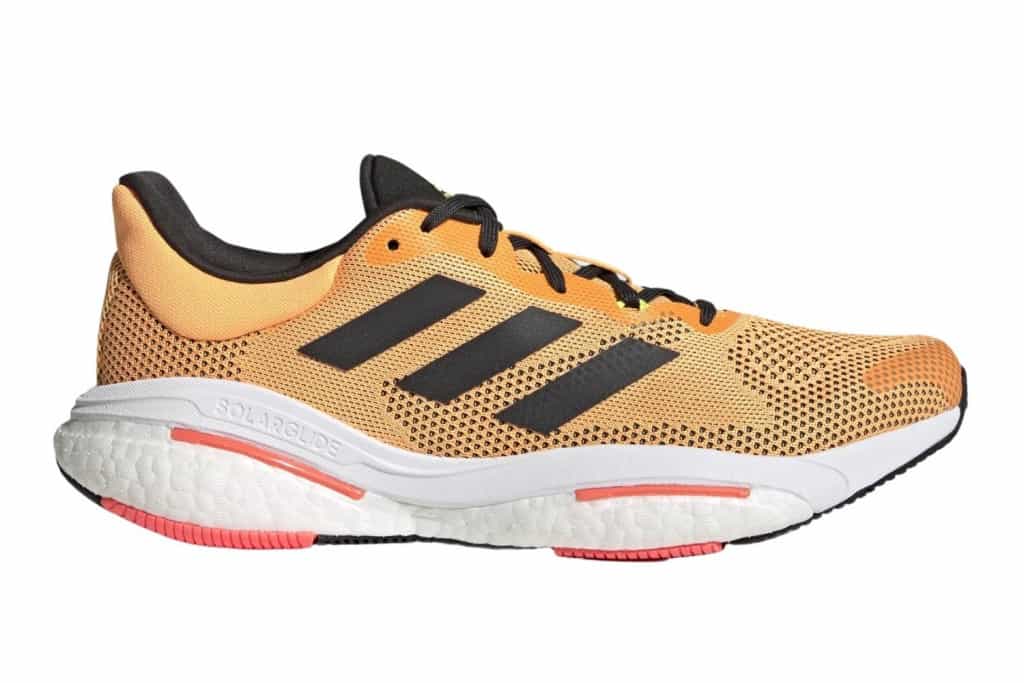
Published on: 07/25/2022
The Adidas Solar Glide 5 is a reliable neutral shoe with a stable ride for everyday runs.The Consensus
Good stable and sturdy shoes but a little too heavy with a heel too wide for some runners
Don’t have time to read the full review? Here’s what you need to know.
The Adidas Solar Glide 5 uses Boost foam technology, with some changes from previous versions. It provides a fair amount of cushioning and underfoot protection. While it’s not officially a stability shoe, it’s very stable and delivers a good grip on both wet and dry roads.
Testers found this neutral daily trainer to be very stiff, especially at the beginning. However, this becomes less pronounced with each run. Finally, all testers noted that the Adidas SolarGlide 5’s weight was significant; it’s undoubtedly its main flaw.
These road shoes are suitable for daily use, regular jogging, or recovery sessions. They can also be ideal for beginner runners who want a stable and durable model to start running regularly.
Please read our full review of the Adidas Solar Glide 5 for more information.
PROS
- Good cushion
- Comfortable and relatively wide
- Very good grip
- Resistant
- Upper made in part with recycled materials
CONS
- Very stiff at first
- Very heavy shoe compared to other shoes
- The price remains high for this series
Adidas Solar Glide 5 Complete Review Analysis
Introduction
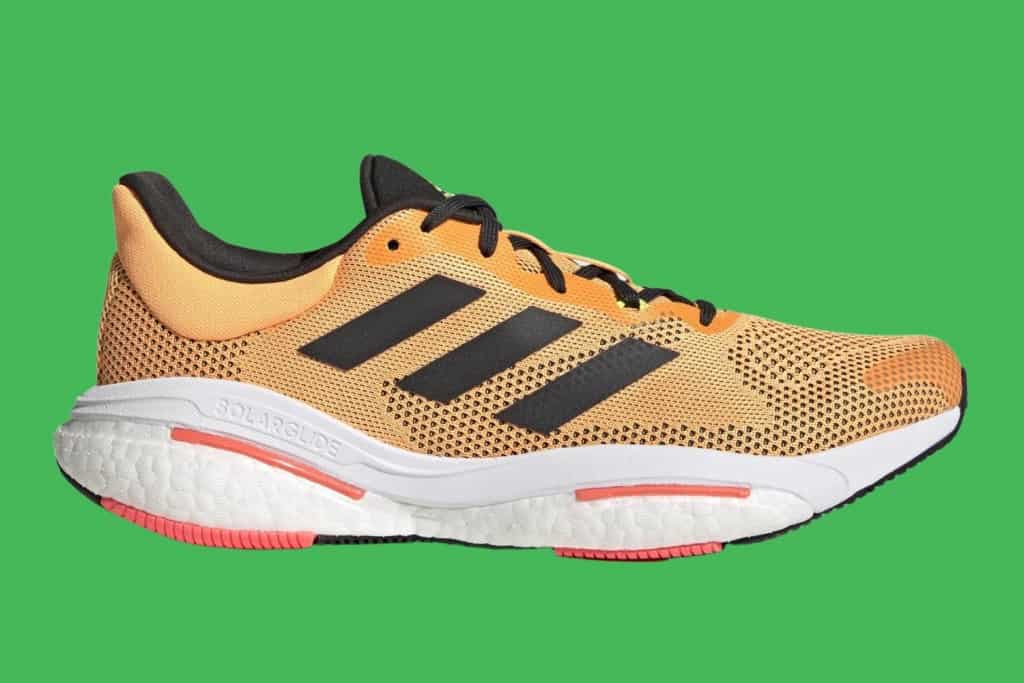
The Adidas Solar Glide 5 is the newest version of the famous German brand. Using the BOOST technology that made it famous, it has some interesting features: it’s stable, versatile, and quite comfortable.
We will detail with you the different strong points of this road shoe and what could be improved on this Solar Glide.
Cushioning
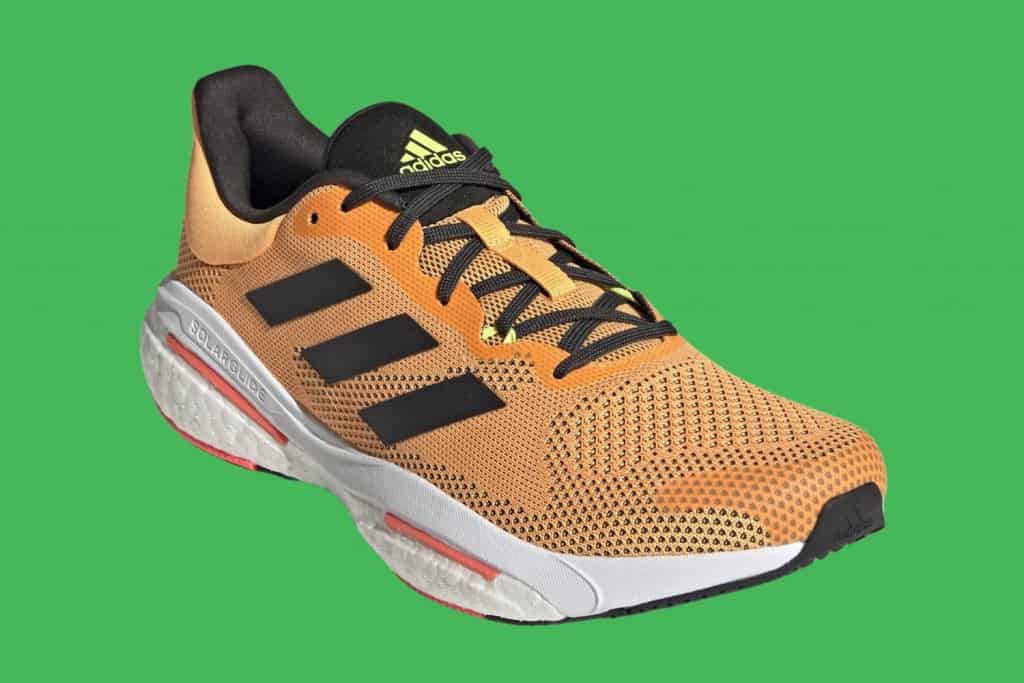
The new midsole of the Adidas Solar Glide 5 uses the traditional Boost technology. This has been slightly modified compared to previous models and now offers two new “Boost Pillows.” Adidas claims that this new configuration offers an increased energy return while running.
The heel stack is quite high (36 mm, 26 mm under the toes), allowing for a softer landing and smoother ride. There’s also a small plastic plate at the rear. This is the LEP 2.0. It’s a type of control platform that allows the runner to have durable support at the back of the shoe and be propelled forward.
The heel-to-toe drop is 10 mm, which is relatively standard for a running shoe.
This highly cushioned shoe is universal and offers neutral foot support in terms.
Foot lockdown (upper)
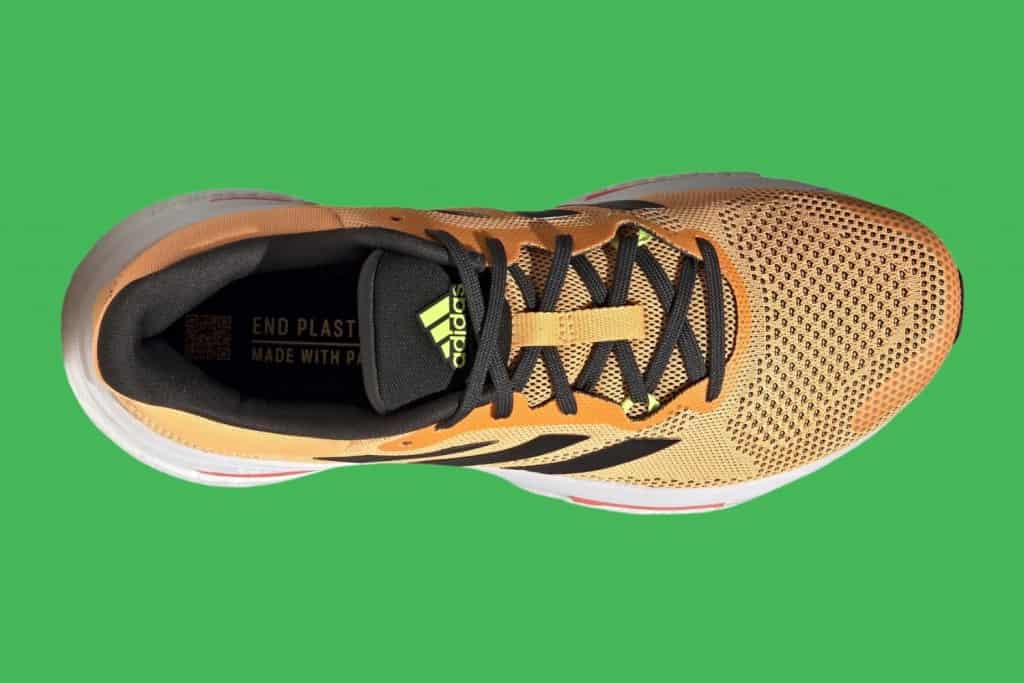
The Adidas Solar Glide 5’s upper fits pretty well.
The engineered mesh is thick, providing good foot protection but making it a bit warm. However, runners note that it’s still breathable.
Runners didn’t report any irritation or discomfort from this knitted upper crafted with recycled materials.
The thin tongue has no gusset, is very padded, and has a double attachment for the laces. Double knots are not required.
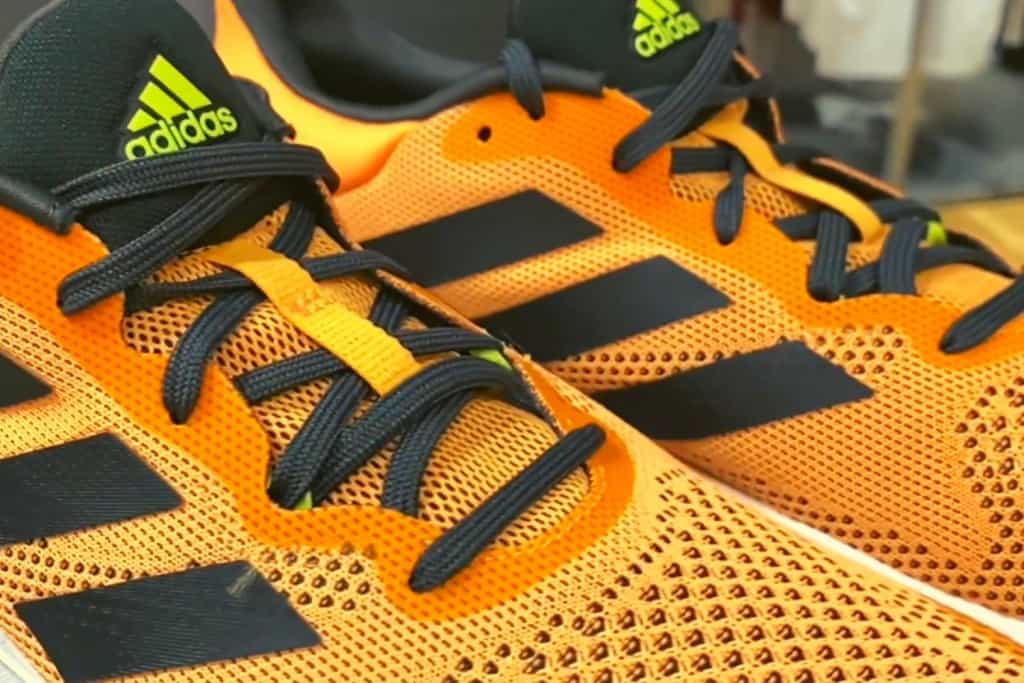
The fit is pretty decent throughout the running shoe, although the heel collar is not tight enough for some. The stiff counter helps to secure the foot in the shoe, but it may not be to everyone’s liking.
The comfort is there, according to runners who tested the shoe. Overlays are minimal on the upper, making it quite comfortable. Warning: if you have particularly wide feet, it might not be a good fit for you, as the forefoot is not especially spacious.
Regarding the weight, these new Solar Glide 5 running shoes are rather heavy: 335 g/11.8 oz on average. If you are used to wearing lighter models, you may be surprised, although it does feel lighter than you’d think from the weight.
Grip and durability
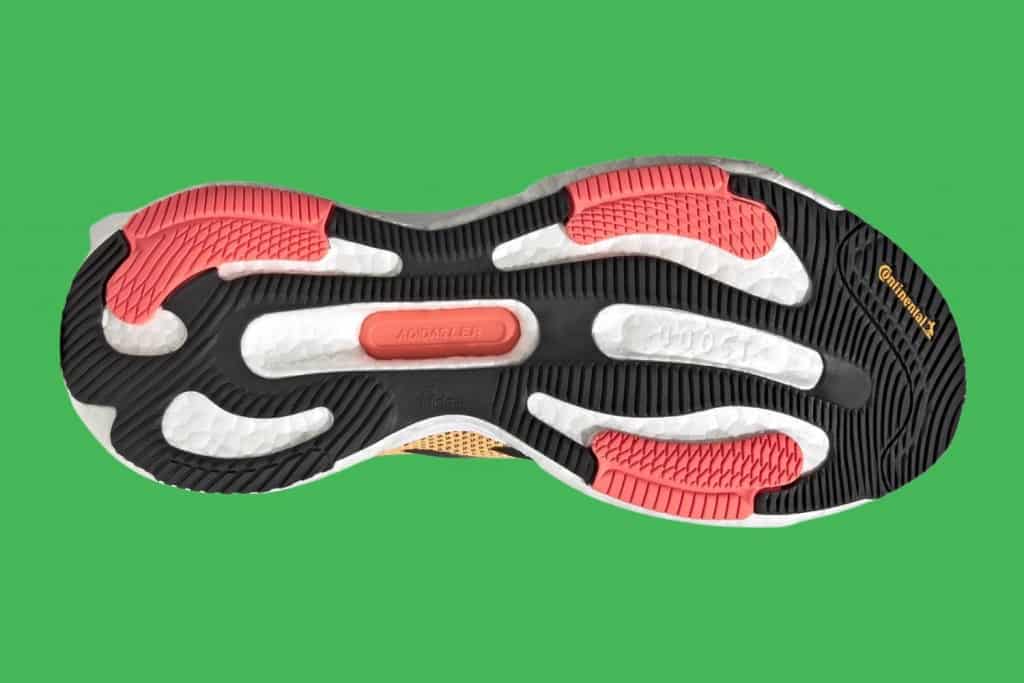
The outsole of the Solar Glide 5 uses Continental Rubber Outsole technology, a type of durable rubber.
It gives the shoe a very good grip on the road, whether running on dry or wet ground. Testers also noted that it was excellent on turns. Some even used them off-road and on trails and appreciated the grip they offered.
As for the durability of the outsole on the outside of the Solar Glide 5, several people noted that it was very good: after several dozen miles, they didn’t notice any signs of wear. This gives good hope that the shoe is able to sustain long miles.
Finally, as we mentioned before, there’s the LEP plastic torsion system. It extends across the width of the shoe, from the forefoot to the heel. As a result, the shoe is stiffer in these two areas. It adds a higher level of torsional strength to the whole. It’s safe to say that this model is not particularly flexible, if not very stiff.
The ride
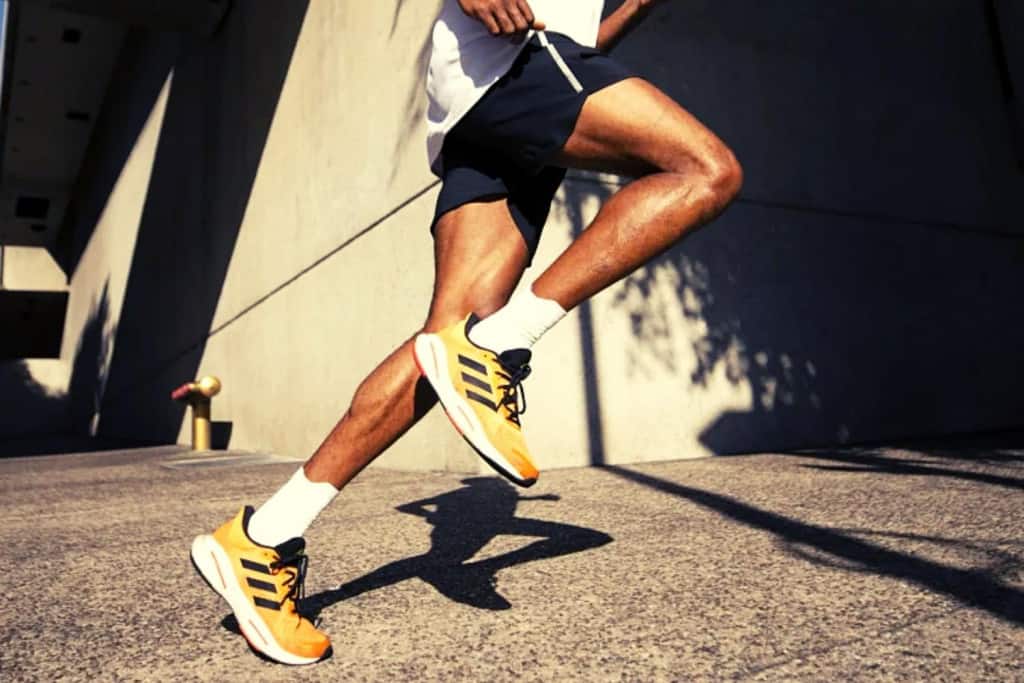
The testers’ running impressions are quite different for the Adidas Solar Glide 5 than for the previous versions. The heel to rearfoot transition is much smoother than in the past.
The fact that it’s relatively flared at the back makes these transitions somewhat abrupt initially, but you get used to it after only a few miles. As with the Ultra Boost 22, a full-length LEP system accentuates this high stiffness on the first few rides.
Despite the stiffness, the feel underfoot is comfortable and delivers a cushioned ride with its full-length BOOST midsole. Also, there’s a slight pleasant bounce.
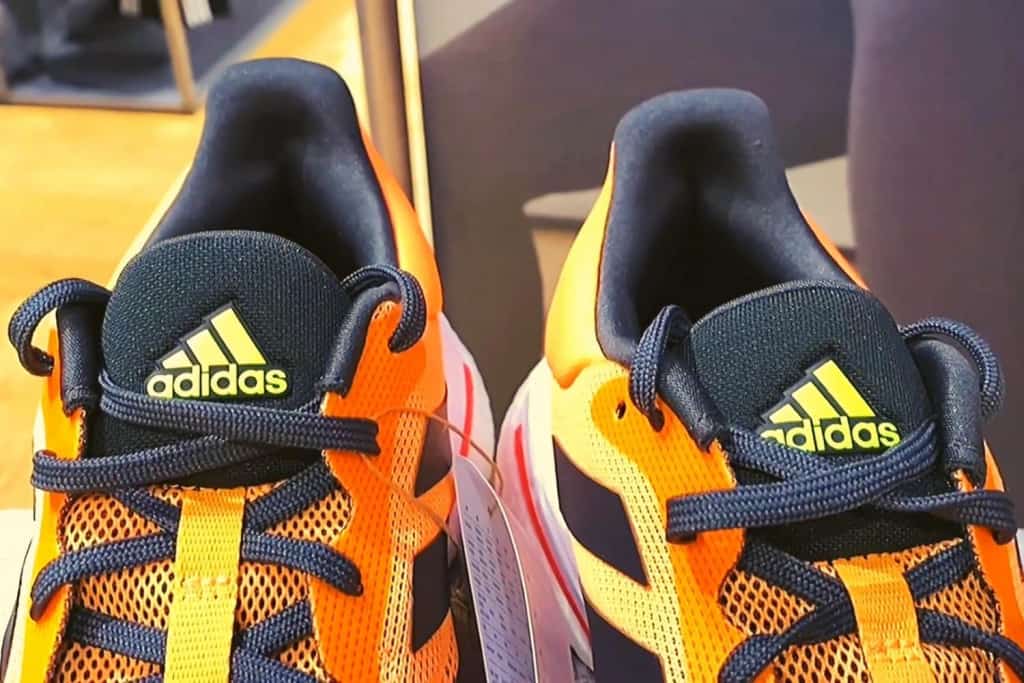
With its stiffness and BOOST bounce, the Solar Glide 5 running shoe is surprisingly responsive for its weight. However, it’s still very heavy, and this weight can be felt more pronounced after a few miles, sometimes adding to the feeling of effort fatigue. For this reason, it may not be suitable for long distances (unless the weight of the running shoes does not matter to you).
Overall, it’s mostly suitable for recovery runs and daily miles.
Conclusion
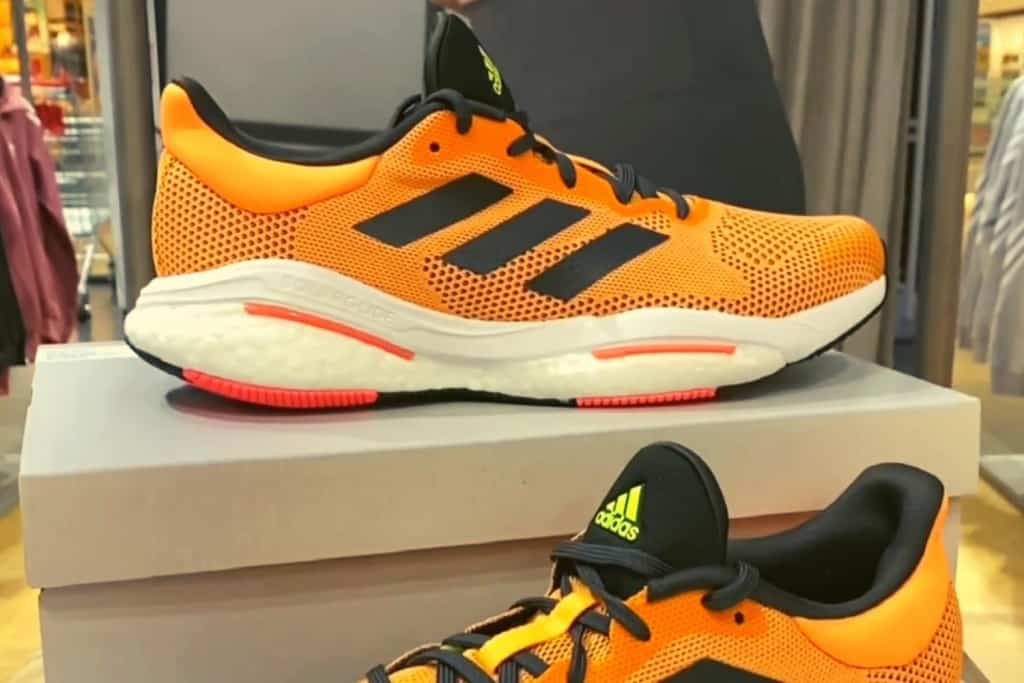
The new Adidas Solar Glide 5 uses the famous BOOST technology, combined with the LEP system. It offers an interesting cushion to runners regardless of their pronation type. The upper uses recycled plastic, which is quite a bit more sustainable. The inside of the shoe is comfortable and spacious at the heel, not so much around the toes.
All in all, it’s a fairly stiff running shoe, which is well suited to beginners with a neutral gait looking for stability. It’s also a good pick for runners looking for a versatile shoe focused on comfort, stability, and durability over performance. For example, marathon runners will quite enjoy it for their recovery runs. However, the shoe’s weight is its biggest drawback: it feels a bit heavy and clunky once you hit the 10-mile mark, which increases fatigue. We hope Adidas will offer a lighter shoe next year!
Facts
Technical Specs
| Terrain | Road |
| Pronation type | Neutral |
| Drop | 10 mm |
| Heel height | 36 mm |
| Forefoot height | 26 mm |
| Weight (men) | 335 g/11.8 oz |
| Weight (women) | 300 g/10.6 oz |
| Features | |
| Athletes | |
| Release year | 2022 |
| Price | Check prices |
Cushioning
| Softness | Balanced |
| Responsiveness | Low |
Technologies
| Outsole | Continental Rubber |
| Midsole | BOOST, Linear Energy Push |
| Upper | Engineered mesh |
Use
| Speed | Slow, Moderate |
| Distance | Mid, 10K, Half marathon, Long, Marathon |
| Workout | Daily running |
FAQ
It does, but some runners complain that the toe box is a bit narrow, so be careful if you have wider feet.
Did you know?
Since 2017, we have analyzed hundreds of road running shoes, and thousands of runners trust us to find the perfect pair every month!
Discover our selection of the best 2022 road running shoes.
